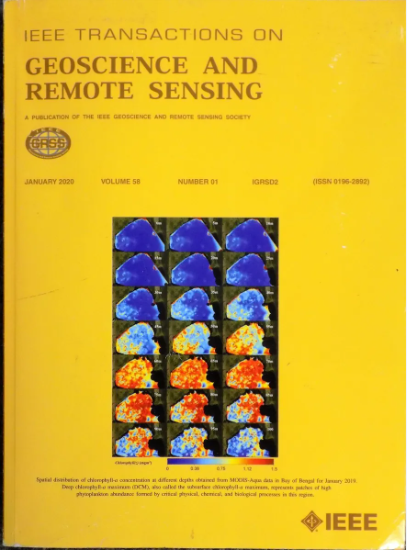CroDoSR: Tensor Cross-Domain Rank for Hyperspectral Image Super-Resolution
IF 7.5
1区 地球科学
Q1 ENGINEERING, ELECTRICAL & ELECTRONIC
IEEE Transactions on Geoscience and Remote Sensing
Pub Date : 2024-09-10
DOI:10.1109/TGRS.2024.3457673
引用次数: 0
Abstract
Hyperspectral image super-resolution (HSI SR) aims to combine the detailed spectral information of hyperspectral images with the spatial resolution of multispectral images, thus enhancing the ability to extract valuable insights across various applications. Recently, the tensor singular value decomposition (t-SVD) has emerged as a powerful tool and has been introduced into the HSI SR field for exploring low-rank prior information. For t-SVD, the domain transform is crucial to acquiring more low-rank data characteristics. Nevertheless, previous efforts on domain transform have only involved the single transformed domain (i.e., single domain), while ignoring the potential pursuing the lower rankness in multiple successional transformed domains, termed cross-domain (CD). In this article, we propose a novel CD-based t-SVD and define the corresponding tensor CD rank based on a pivotal observation, i.e., the low-rank behavior of HSI in CD is more significant than that in single domain. More specifically, we first define a successional linear transform (SLT) to establish the CD concept, then develop a novel CD-based t-SVD and tensor CD rank, and theoretically deduce a new tensor CD-nuclear norm as the convex approximation of CD rank. Equipped with such a CD rank, we thus formulate a CD-rank-constrained minimization model for the HSI SR task, called CroDoSR, which is effectively solved by the alternating direction method of multipliers (ADMMs). Comprehensive experiments on several widely used datasets evidently demonstrate the superiority of the proposed CroDoSR method.CroDoSR:用于高光谱图像超分辨率的张量跨域等级
高光谱图像超分辨率(HSI SR)旨在将高光谱图像的详细光谱信息与多光谱图像的空间分辨率相结合,从而提高在各种应用中提取有价值见解的能力。最近,张量奇异值分解(t-SVD)作为一种强大的工具出现,并被引入 HSI SR 领域,用于探索低阶先验信息。对于 t-SVD,域变换对于获取更多低阶数据特征至关重要。然而,以往的域变换只涉及单个变换域(即单域),而忽略了在多个连续变换域(称为跨域(CD))中追求低秩的潜力。在本文中,我们提出了一种新颖的基于 CD 的 t-SVD,并基于一个重要的观察结果定义了相应的张量 CD 等级,即 HSI 在 CD 中的低等级行为比在单域中的低等级行为更为显著。更具体地说,我们首先定义了继承线性变换(SLT)以建立 CD 概念,然后开发了一种基于 CD 的新型 t-SVD 和张量 CD 秩,并从理论上推导出一种新的张量 CD 核规范作为 CD 秩的凸近似值。有了这种 CD 秩,我们就为人机交互 SR 任务建立了一个 CD 秩约束的最小化模型,称为 CroDoSR,该模型可通过交替乘法(ADMM)有效求解。在几个广泛使用的数据集上进行的综合实验证明了所提出的 CroDoSR 方法的优越性。
本文章由计算机程序翻译,如有差异,请以英文原文为准。
求助全文
约1分钟内获得全文
求助全文
来源期刊

IEEE Transactions on Geoscience and Remote Sensing
工程技术-地球化学与地球物理
CiteScore
11.50
自引率
28.00%
发文量
1912
审稿时长
4.0 months
期刊介绍:
IEEE Transactions on Geoscience and Remote Sensing (TGRS) is a monthly publication that focuses on the theory, concepts, and techniques of science and engineering as applied to sensing the land, oceans, atmosphere, and space; and the processing, interpretation, and dissemination of this information.
 求助内容:
求助内容: 应助结果提醒方式:
应助结果提醒方式:


